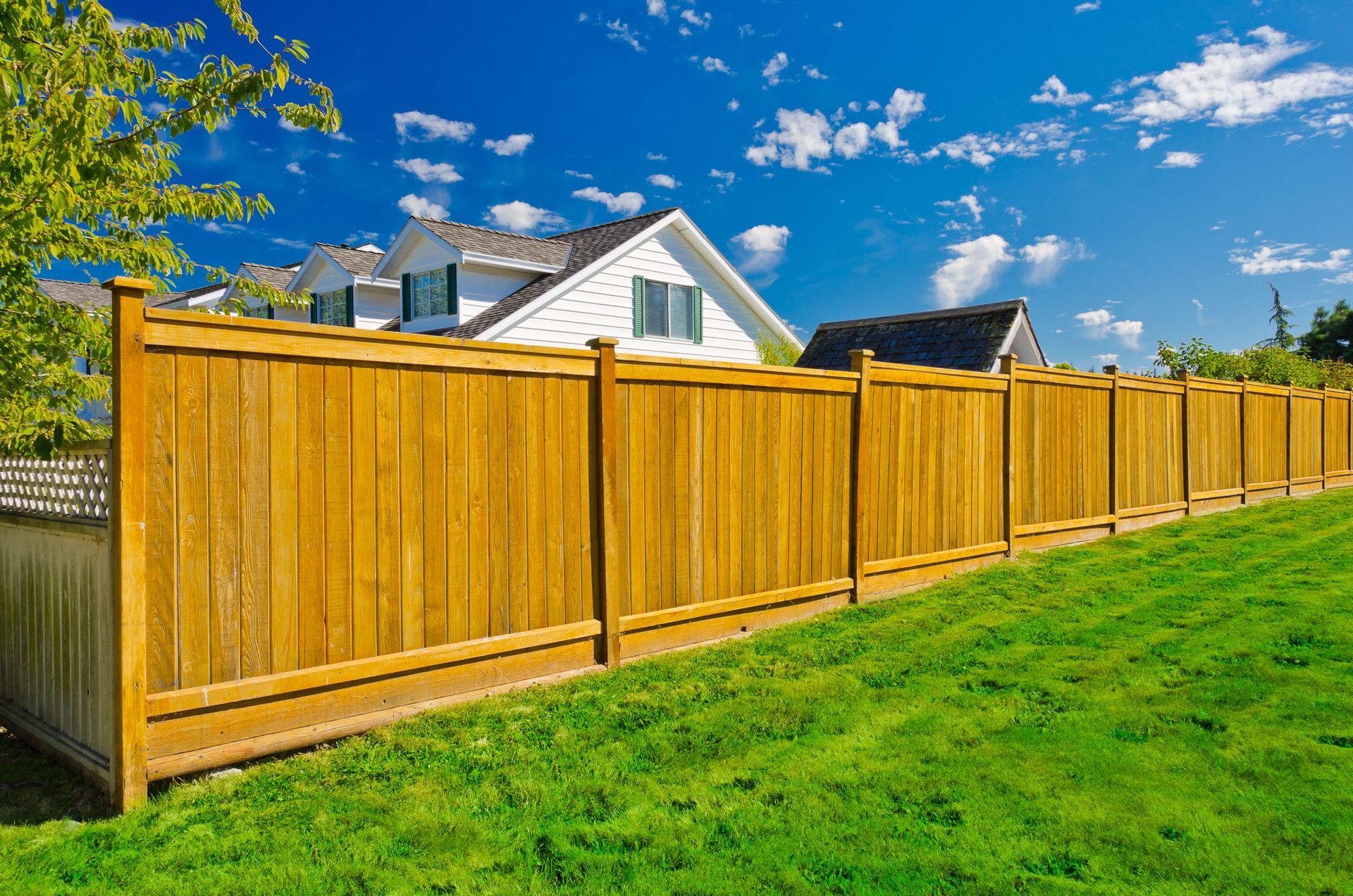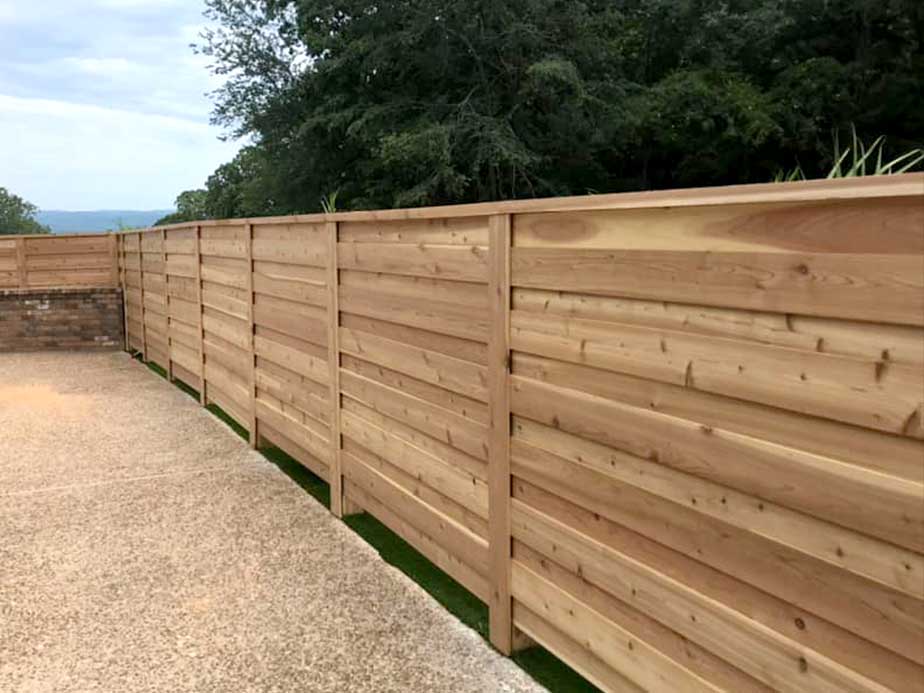All Categories
Featured
Picking the best fence product for your home can be a complicated job with the range of alternatives readily available. Whether you're intending to increase security, enhance personal privacy, or improve the aesthetic charm of your home or organization, the right fencing can serve multiple objectives. In this overview, we'll discover various fence materials, their benefits, and which alternatives may be ideal matched for numerous requirements.
Benefits:
All-natural Look: Timber supplies a warm, natural visual that matches gardens, grass, and other outdoor areas. Personalized: You can paint or tarnish wood fences in any shade, permitting for unlimited layout opportunities. Privacy and Safety: When created as a strong panel, a wood fence can give superb privacy and safety. Negative Aspects:
Upkeep Required: Wood fences require regular maintenance to avoid rot, warping, and damage from insects like termites. At risk to Weather Condition: Direct exposure to sunlight, rainfall, and snow can weaken the high quality of the wood over time, which implies you might require to reseal or replace boards. Best For: House owners trying to find a conventional, customizable fence with a natural appearance.
Benefits:
Resilient and resilient: Plastic is unsusceptible to the weathering that timber fences experience, and it will not warp, split, or fade. Reduced Maintenance: Unlike timber, plastic does not need discoloration or sealing. Cleansing it is as straightforward as washing it with water. Range of Styles: Plastic fence is available in several designs and shades, and some variations also imitate the look of timber. Drawbacks:
Greater First Cost: Vinyl fences can be more costly to set up contrasted to other materials, such as wood or chain web link. Prone to Breaking: While sturdy, plastic can come to be brittle and split in extremely chilly temperature levels or when struck with pressure. Limited Modification: Unlike wood, vinyl can not be easily modified, so your layout alternatives are more minimal. Best For: House owners that prioritize low maintenance and lasting longevity, and that agree to spend in a higher initial cost.
Advantages:
Inexpensive: One of the most affordable secure fencing alternatives, making it ideal for huge residential properties or locations calling for extensive coverage. Reduced Maintenance: Wire mesh fence require little to no maintenance past periodic cleansing and repair work. Sturdy and Secure: While not aesthetically attractive, wire mesh fence are strong, tough to climb, and supply a high degree of safety. Drawbacks:
![]()
Absence of Privacy: A wire mesh fence doesn't supply much personal privacy unless you add slats or other adjustments. Industrial Look: The cord mesh might not enhance all residential or commercial property types, specifically residential homes or areas requiring an aesthetic touch. Best For: Huge residential or commercial properties or areas where budget plan is a concern, or for those who require a strong, secure border without the demand for privacy.
Benefits:
Solid and Secure: Steel fencings use outstanding safety and security, as they are difficult to climb up and offer a durable barrier versus trespassers. Long Life-span: Metal fences can last for decades, particularly when dealt with for rust and corrosion resistance. Sophisticated Aesthetic: Wrought iron and steel fences add a stylish, traditional seek to homes, gardens, or business buildings. Negative Aspects:
Pricey: Metal fencings, specifically functioned iron, tend to have a higher ahead of time expense than various other materials. Maintenance Requirements: Steel and functioned iron fences may rust gradually otherwise properly preserved, requiring routine paint or treatment. Limited Privacy: Steel fencings are typically open, so they do not offer the privacy that strong fencings like timber or vinyl can provide unless combined with various other materials. Best For: Those seeking a high-security, attractive choice with a long lifespan, especially for high-traffic or high end areas.
Benefits:
![]()
Reduced Upkeep: Compound fence requires no paint, staining, or securing. It's simple to clean with simply soap and water. Longevity: Immune to rot, bugs, and weather condition, composite fences last much longer than typical wood. Eco-Friendly: Many composite products are made from recycled timber and plastic, lowering ecological impact. Negative Aspects:
Costly: The initial price of composite secure fencing can be greater than wood or vinyl. Limited Customization: While available in different shades, composite fences do not use as numerous style options as wood. Heavy: Compound materials are typically larger than other kinds of secure fencing, which can make installment a lot more tough. Best For: Those that want a low-maintenance, green option that combines the appearance of wood with boosted durability.
Conclusion. Selecting the ideal fence material for your property relies on a selection of aspects, including your budget plan, visual choices, personal privacy requirements, and maintenance desire. Whether you choose the ageless charm of wood, the low-maintenance advantages of plastic, the stamina of steel, or the environmentally friendly durability of composite, choosing the most effective fence requires careful consideration of your property's special demands. By understanding the benefits and restrictions of each material, you can make an educated choice that supplies lasting value and satisfaction for your residential or commercial property.
- Timber Fence. Wood fencing is a traditional selection for numerous homeowners as a result of its natural appeal, flexibility, and capability to blend perfectly with various architectural styles. Offered in a variety of designs, including personal privacy, ranch, and picket rails, timber can be customized with paint or stain to match your preferred aesthetic.
Benefits:
All-natural Look: Timber supplies a warm, natural visual that matches gardens, grass, and other outdoor areas. Personalized: You can paint or tarnish wood fences in any shade, permitting for unlimited layout opportunities. Privacy and Safety: When created as a strong panel, a wood fence can give superb privacy and safety. Negative Aspects:
Upkeep Required: Wood fences require regular maintenance to avoid rot, warping, and damage from insects like termites. At risk to Weather Condition: Direct exposure to sunlight, rainfall, and snow can weaken the high quality of the wood over time, which implies you might require to reseal or replace boards. Best For: House owners trying to find a conventional, customizable fence with a natural appearance.
- Plastic (PVC) Fencing. Plastic fencings have grown in appeal as a result of their reduced maintenance and durability. Made from artificial plastic products, plastic fences are immune to rot, fading, and bugs, using a clean, modern-day look with little upkeep.
Benefits:
Resilient and resilient: Plastic is unsusceptible to the weathering that timber fences experience, and it will not warp, split, or fade. Reduced Maintenance: Unlike timber, plastic does not need discoloration or sealing. Cleansing it is as straightforward as washing it with water. Range of Styles: Plastic fence is available in several designs and shades, and some variations also imitate the look of timber. Drawbacks:
Greater First Cost: Vinyl fences can be more costly to set up contrasted to other materials, such as wood or chain web link. Prone to Breaking: While sturdy, plastic can come to be brittle and split in extremely chilly temperature levels or when struck with pressure. Limited Modification: Unlike wood, vinyl can not be easily modified, so your layout alternatives are more minimal. Best For: House owners that prioritize low maintenance and lasting longevity, and that agree to spend in a higher initial cost.
- Chain Web Link Fencing. Wire mesh fence are a cost-efficient option for those looking for safety and security without the high cost. Typically utilized in business homes, parks, and large residential locations, chain web link fences supply an efficient border and are readily available in a range of heights.
Advantages:
Inexpensive: One of the most affordable secure fencing alternatives, making it ideal for huge residential properties or locations calling for extensive coverage. Reduced Maintenance: Wire mesh fence require little to no maintenance past periodic cleansing and repair work. Sturdy and Secure: While not aesthetically attractive, wire mesh fence are strong, tough to climb, and supply a high degree of safety. Drawbacks:

Absence of Privacy: A wire mesh fence doesn't supply much personal privacy unless you add slats or other adjustments. Industrial Look: The cord mesh might not enhance all residential or commercial property types, specifically residential homes or areas requiring an aesthetic touch. Best For: Huge residential or commercial properties or areas where budget plan is a concern, or for those who require a strong, secure border without the demand for privacy.
- Metal Fence (Light Weight Aluminum, Steel, Wrought Iron) Steel fences, such as aluminum, steel, and functioned iron, are preferred for their longevity, strength, and safety. These materials are typically made use of in high-security industrial buildings, upscale suburbs, and those looking for an innovative, attractive appearance.
Benefits:
Solid and Secure: Steel fencings use outstanding safety and security, as they are difficult to climb up and offer a durable barrier versus trespassers. Long Life-span: Metal fences can last for decades, particularly when dealt with for rust and corrosion resistance. Sophisticated Aesthetic: Wrought iron and steel fences add a stylish, traditional seek to homes, gardens, or business buildings. Negative Aspects:
Pricey: Metal fencings, specifically functioned iron, tend to have a higher ahead of time expense than various other materials. Maintenance Requirements: Steel and functioned iron fences may rust gradually otherwise properly preserved, requiring routine paint or treatment. Limited Privacy: Steel fencings are typically open, so they do not offer the privacy that strong fencings like timber or vinyl can provide unless combined with various other materials. Best For: Those seeking a high-security, attractive choice with a long lifespan, especially for high-traffic or high end areas.
- Composite Fencing. Compound fencing combines wood fibers and plastic to create a material that mimics the appearance of timber however is a lot more long lasting and easier to preserve. It's an eco-friendly option made from recycled products, making it both functional and sustainable.
Benefits:

Reduced Upkeep: Compound fence requires no paint, staining, or securing. It's simple to clean with simply soap and water. Longevity: Immune to rot, bugs, and weather condition, composite fences last much longer than typical wood. Eco-Friendly: Many composite products are made from recycled timber and plastic, lowering ecological impact. Negative Aspects:
Costly: The initial price of composite secure fencing can be greater than wood or vinyl. Limited Customization: While available in different shades, composite fences do not use as numerous style options as wood. Heavy: Compound materials are typically larger than other kinds of secure fencing, which can make installment a lot more tough. Best For: Those that want a low-maintenance, green option that combines the appearance of wood with boosted durability.
Conclusion. Selecting the ideal fence material for your property relies on a selection of aspects, including your budget plan, visual choices, personal privacy requirements, and maintenance desire. Whether you choose the ageless charm of wood, the low-maintenance advantages of plastic, the stamina of steel, or the environmentally friendly durability of composite, choosing the most effective fence requires careful consideration of your property's special demands. By understanding the benefits and restrictions of each material, you can make an educated choice that supplies lasting value and satisfaction for your residential or commercial property.
Latest Posts
Experience the Style of Wood Flooring with Carpet Interiors Floor & Home
Published Apr 19, 25
1 min read
Floor Covering Professionals That Treat You Like Household
Published Apr 19, 25
1 min read
Montclare Auto Repair: The Trusted Choice for Expert Brake & Engine Fixes
Published Apr 19, 25
2 min read
More
Latest Posts
Experience the Style of Wood Flooring with Carpet Interiors Floor & Home
Published Apr 19, 25
1 min read
Floor Covering Professionals That Treat You Like Household
Published Apr 19, 25
1 min read
Montclare Auto Repair: The Trusted Choice for Expert Brake & Engine Fixes
Published Apr 19, 25
2 min read